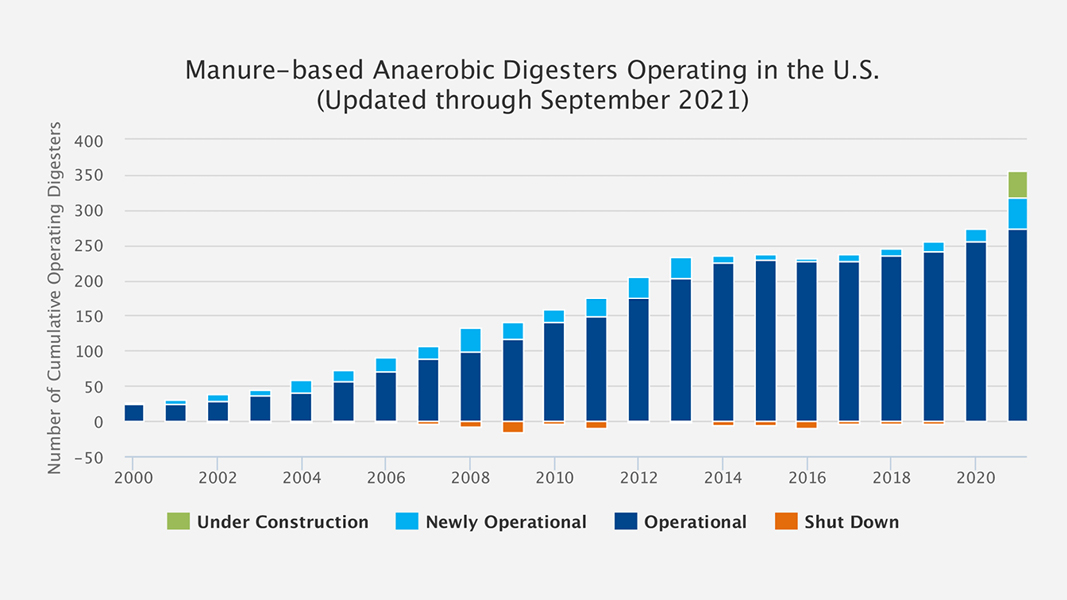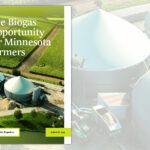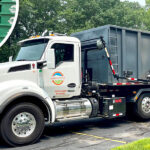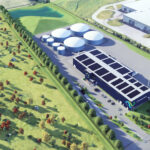Top: Source: U.S. EPA AgSTAR
The latest farm digester data (09/30/2021) from the U.S. EPA’s AgSTAR program finds that 44 anaerobic digestion (AD) systems on U.S. farms have come online this year, all producing renewable natural gas (RNG). Thirty-six of these systems are at dairy farms in California, three at swine farms in Missouri, and five at dairies in Idaho and Vermont. This brings the total number of U.S. manure-based AD systems operating to 317. Approximately 38 additional systems are currently under construction, most of which will produce RNG, either for pipeline injection or use as vehicle fuel. Seven existing power generation projects intending to switch to RNG production are now in the construction phase, and several more RNG project conversions are in the planning and development stages.
Different types of AD systems are utilized: covered lagoons lead with 112 installations (35.3% of the total), followed closely by plug flow designs (99 or 31.2%) and complete mix (91 or 28.7%). Although there has been a slight decline over the past 6 years, the most common end use of biogas from manure-based AD systems since 2000 is combined heat and power (CHP), followed by electricity. In 2021, manure-based AD systems are expected to generate the equivalent of approximately 1.73 million megawatt-hours (MWh) of electricity.
The number of boiler and furnace fuel projects increased much more slowly from 2000 to 2013 and has seen little change since. RNG projects, including pipeline injection and compressed natural gas (CNG) for vehicle fuel or other uses, have risen steadily and significantly since 2017. The rise in the number of systems producing CNG has been particularly sharp in the last year — from fewer than 30 in 2020 to close to 75 currently. Projects that flare the biogas full time currently make up approximately 4% of all projects.
Annual emission reductions resulting from U.S. livestock digesters have increased from approximately 5.27 million metric tons of carbon dioxide (CO2) equivalent (MMTCO2e) in 2020 to 5.95 MMTCO2e as of September 2021. Reductions in emissions of this size are equivalent to removing 1.3 million passenger vehicles from the road for one year. AgSTAR estimates that biogas recovery systems are technically feasible for over 8,000 large dairy and hog operations. These farms could potentially generate nearly 16 million MWh of energy per year and displace about 2,010 megawatts (MWs) of fossil fuel-fired generation. Access to the AD facility database and detailed graphs of current trends and data are available on the AgSTAR website.













